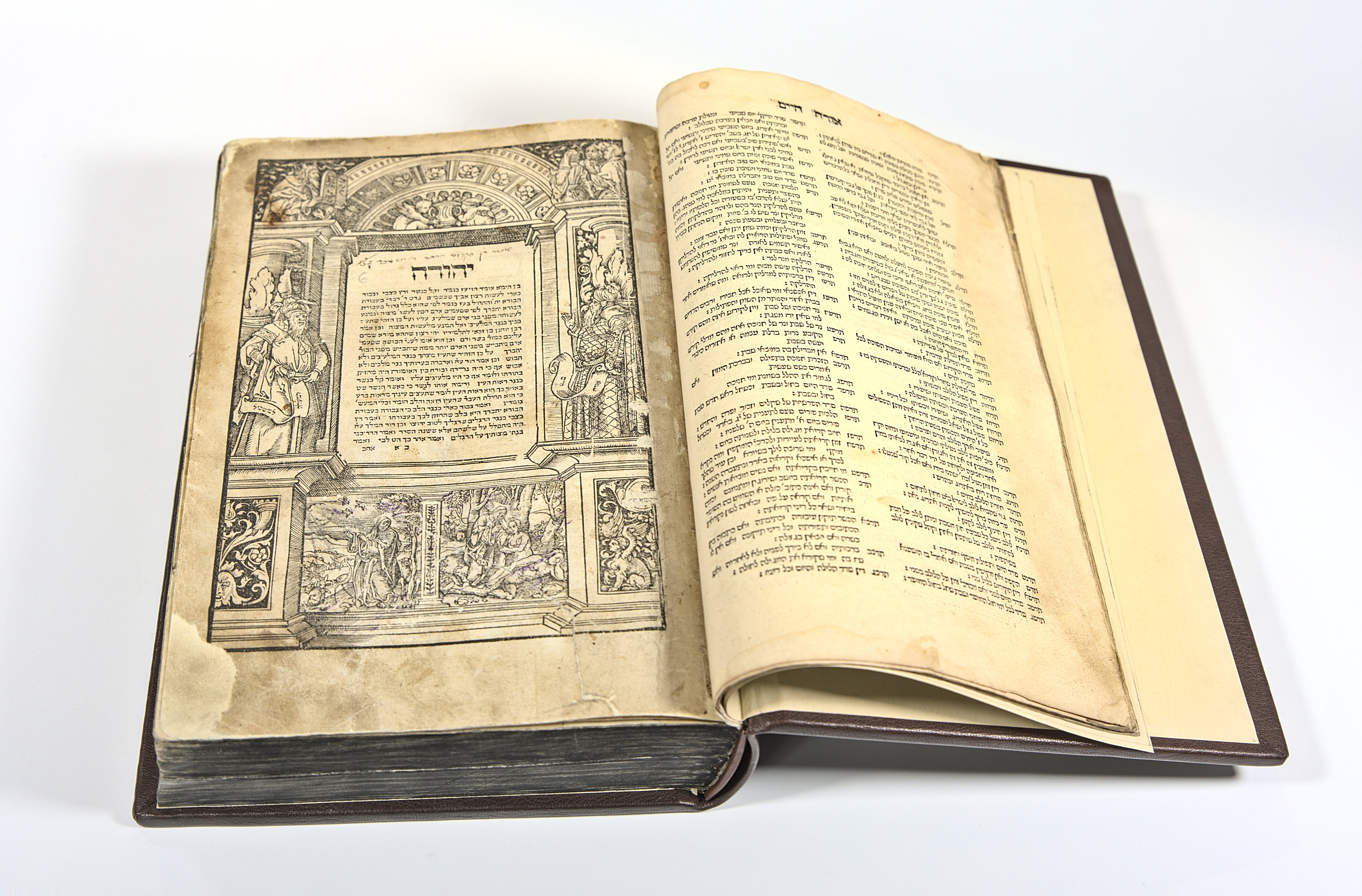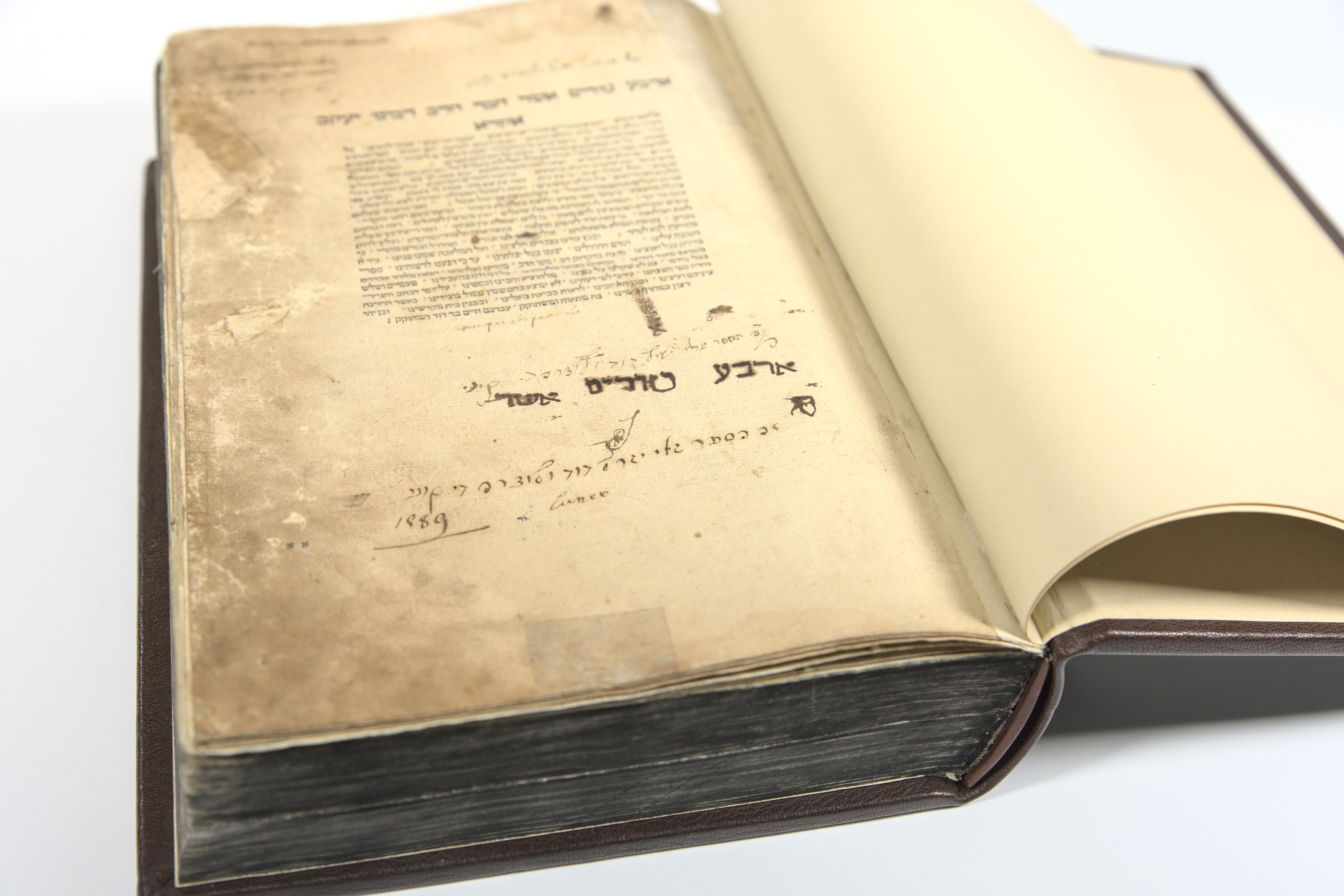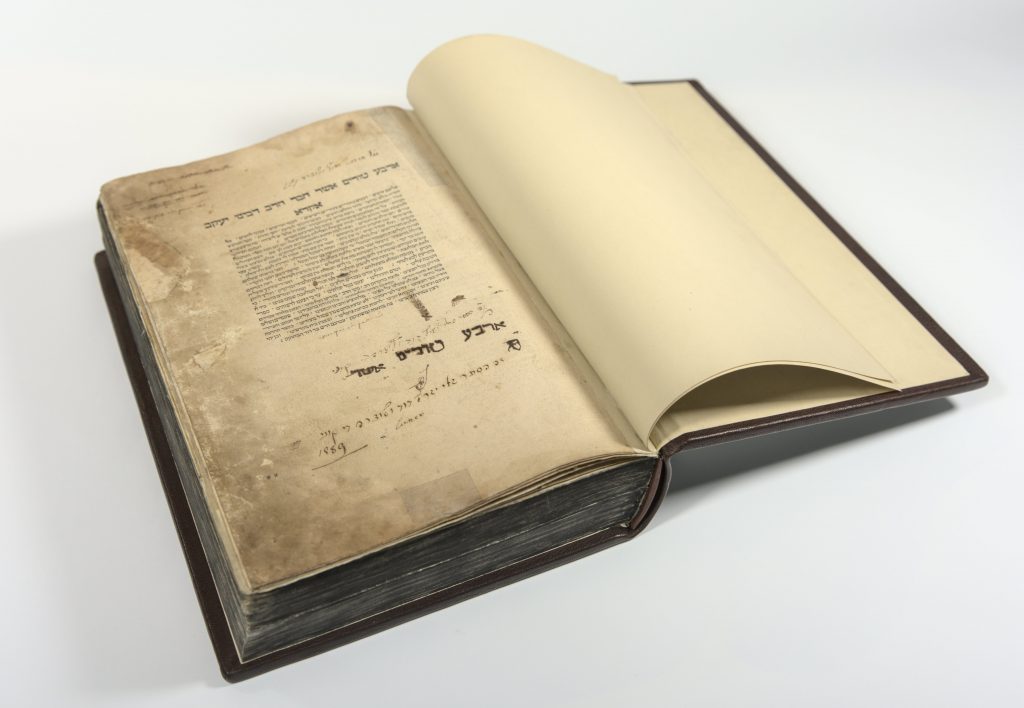Early modern Hebrew print returns to Augsburg
After more than 480 years, a print by the Hebrew and Yiddish printer Chaim Schwarz has returned to Augsburg. The book “Arba’a Turim” was printed in Augsburg in the period around 1540 – a sensation, because actually there was no Jewish life in Augsburg at that time. Jews were forbidden to settle in the city for centuries between the expulsion in 1438 and the beginning of resettlement from 1803.
“That Chaim Schwarz managed to stay in Augsburg, at least for a while, and print some of the most important early modern Hebrew and Yiddish books in our city is almost a miracle,” explains museum director Carmen Reichert. “A miracle, however, that can be explained by Augsburg’s history as a Reformation city: During the Reformation, people returned to the biblical texts in the original languages, i.e. Hebrew and Greek. Therefore, Hebrew printing type was needed and a printer who could handle it.”

The printer Chaim Schwarz came from Prague, a centre of Hebrew printing at the time. He arrived in Augsburg via Wroclaw around 1533 and probably stayed here until 1544, before moving on to Ichenhausen in Swabia. Some of the most important Hebrew and Yiddish printed books of the time were produced in Augsburg: among others, two of the oldest printed Yiddish stories, as well as Hebrew prayer books – and the print “Arba’a Turim”, which has now returned to Augsburg.
The “Arba’a Turim” is a halakhic codex and was written by Jakob ben Asher. The title translates as “four pillars” or “four rows”. The work, which is divided into four parts, comments on topics that were of great relevance to the Jewish communities living in the Diaspora, i.e. scattered all over the world: Jewish holidays and prayers, the Jewish dietary laws, Jewish marriage law and Jewish civil and criminal law.
The book is a great document of Augsburg history as Chaim Schwarz’s printing press produced the first Hebrew prints known in modern Germany. It also marks a religious milestone, because “Arba’a Turim” was an important basis for the later and still authoritative collection of laws “Schulchan aruch”.

The Augsburg humanist Konrad Peutinger commissioned the reformer Bonifatius Wolfart to examine the prints of Chaim Schwarz. Wolfart and Schwarz seem to have maintained a friendly relationship, despite all the reservations towards Jews at the time.
Thanks to a generous private donation, the Jewish Museum Augsburg Schwaben was able to acquire the print at the end of 2022. Carmen Reichert brought it from Israel back to Augsburg in April 2023. After the upcoming renovation of the synagogue building, the book is to become an essential part of the new permanent exhibition of the Jewish Museum Augsburg Swabia.



